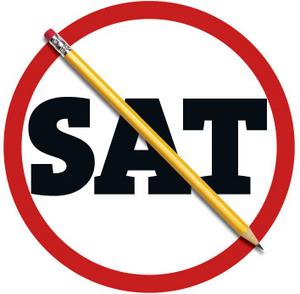Before the Scholastic Aptitude Test (SAT), a majority of students who attended college had an exceptional family background or financial profile. Over time, members of the college community did not want to only accept students who could pay for their education; they also sought students who intellectually qualified for an advanced education. They wanted to expand their college population with students of various skills, disregarding their financial status. Colleges and universities needed some form of an exam that would allow them to compare students all over the country, and even internationally, for college admission.
The idea of a national standardized test was first developed in 1900 by a group of colleges, which formed the College Entrance Examination Board (CEEB), known today as the College Board. This group was organized to support high school students in making a successful transition to higher education by annually providing consistent guidelines and goals for students to strive towards. Colleges were not familiar with different high schools across the country. They needed to have a standardized test would allow equal opportunity for every student in the college admission process. The notion of a national standardized test was to design a common criteria that all students could be judged on, during the college admission.
During the First World War, Robert Yerkes was a leading member of the new Intelligence Quotient (IQ) testing movement. He persuaded the U.S. Army to let him test recruits for intelligence by collecting data on the recruits’ knowledge, skill, and preparedness for war. Yerkes’ IQ test became known as the Army Alpha test, the first mass administered IQ test.
One of Yerkes’ assistants on the Army Alpha test was Carl Brigham, a young psychologist who taught at Princeton University. After the war, Brigham adapted the Army Alpha, mainly by introducing more difficult parts to the exam, for use as a college admissions test. The resulting test was first administered experimentally to a few thousand college applicants in 1926. This pilot form of a SAT was designed as a uniform test for colleges and universities to measure students’ mental capability rather than mastery of learned subjects.
The College Board, developed and implemented the official Scholastic Achievement Test (SAT). The leading colleges of the Northeast of the country, or the IVY leagues schools, were the first to use the SAT in the admission process, because the few colleges that were part of the College Board were from these schools. In 1926, over 8,000 people took the SAT. It took many years for other colleges to accept the SAT as a viable resource for judging new students.
In 1933, James Bryant Conant became president of Harvard University. He decided to start a new scholarship program for academically gifted male students, who were the first of their family’s generation to attend college and require financial aid. Henry Chauncey, an assistant dean at Harvard, was given the task of finding a test to evaluate candidates for these scholarships. Chauncey met with Carl Brigham and recommendation the use of the SAT to Conant. Conant was content with the SAT, because he thought it measured pure intelligence, regardless of the quality of one’s high school education.
In 1938 Chauncey urged all the member colleges of the College Board to use the SAT as a uniform exam, but only for scholarship applicants. Four years later, during World War II, all preexisting College Board admissions tests were abolished and the SAT became the test for all college applicants.
Many people assume that because of World War II, and the contemporary discrimination in the United States, that the SAT and similar IQ exams were another form of separating and discriminating people. In fact, results from such exams were used for statistics purposes, to compare and generalize people of various race, ethnics, and class.
In 1944, under contract to the Army and the Navy, the SAT was administered to more than 300,000 people all over the country on a single day. In 1948 the Educational Testing Service was chartered and the SAT was becoming the basic college admissions device for the country. The test became more popular in the 1950’s and 1960’s, but it had not yet become a universal tool in college admission.
The SAT has gone through several format changes over the years to improve its national and international testing standards. In 2005, the most recent change, the SAT was varied to provide a more accurate reflection of students’ knowledge and better predictor of students’ preparedness for college. The exam time was extended to 3 hours and 45 minutes, excluding the breaks, and the “perfect score” changed from 1600 to 2400. The analogy and quantitative comparison questions were removed and the exam became more concentrated on: short reading comprehension passages, higher-level math concepts, and a new writing section.
In 2009, the College Board introduced its new score reporting policy to include “Score Choice.” Students were able to select which scores they wanted to report to colleges. While students have the choice to submit their best SAT scores, some popular colleges and universities, require students to send all test scores.
The SAT provides a uniform exam to determine the qualifications of a student applying to college. The SAT allows colleges the opportunity to accept students based on their knowledge and skill as oppose to their family background. The College Board wanted to make college appeal to those students who believed they had no place in college. In further aid, the government made it possible for students from low income families to plan for college by providing fee-waivers that make it possible for those students to take the SAT for free. The College Board continues to assist high school students, by guiding students to higher education.

